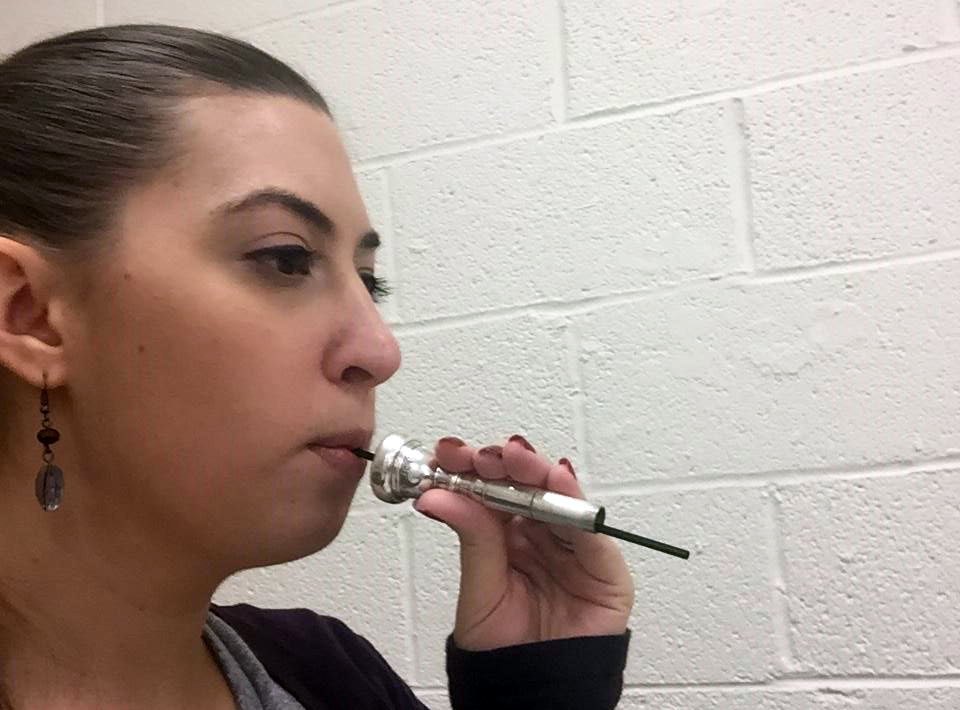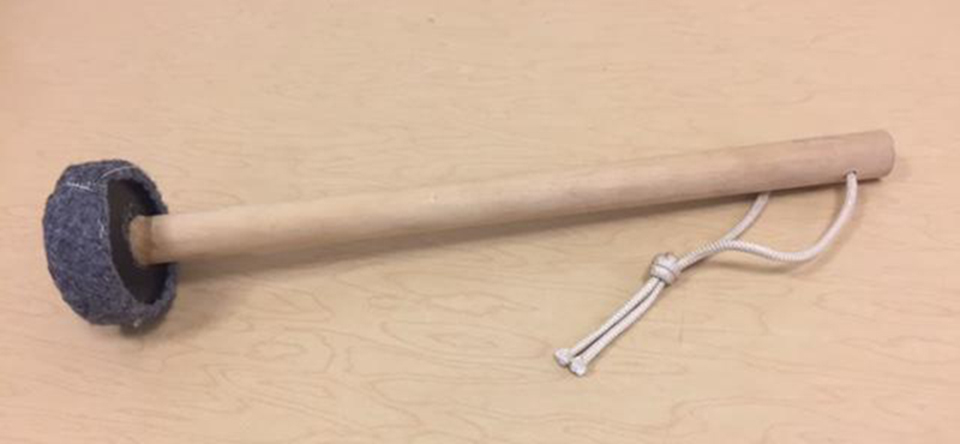
Need a quick fix for a broken instrument? Do your percussionists keep losing your triangle beaters? Do you need to incorporate technology in your rehearsal? These are just a few of the types of challenges instrument directors are faced with every day. If money was no object, most of these issues would be quickly and easily solved. However, many educators work with very limited budgets. To help, we’d like to share a few simple, inexpensive ideas – often using common household items – to help you and your program achieve success!
Teaching Strategies
Having trouble getting your beginner brass players to center their mouthpiece to create correct embouchure? Have your student put a coffee stirrer in their mouth as if they were drinking a beverage. Slide the mouthpiece on the coffee stirrer from the bottom to the top until it reaches the student’s lips. This will quickly center their mouthpiece.

Do you constantly have issues with enforcing good posture? A simple two-foot, 1/2-inch diameter clear tube from a hardware store can demonstrate their airway. To further show the importance of posture, have a brass player put their mouthpiece in the tube and then buzz a note. As they buzz, kink the tube. Your point about posture will be instantly proven and result in a comical memory your students will not forget.
If your students have trouble with a hand position while holding their instrument, locate some tennis balls or baseballs from your coaches or local sporting goods store. Have your students hold the ball. Then, have your student hold their instrument using the same position in which they held the ball. This simple demonstration will help them with keeping their fingers and hand slightly curved.
Repair / Maintenance
There are several items from your local hardware store to help you with quick, temporary repairs as well as instrument and equipment maintenance. You may also use common items probably located in your school already!
A single dollar bill can be used to absorb moisture from sticky pads on your woodwind instruments for a quick fix before a concert. Simply take a U.S. dollar bill and place it under the pad. Press the key down firmly and slide out the bill, repeating if necessary.
A rubber band or hair tie can serve as a quick fix for a loose saxophone register key. Wrapping a rubber band or hair tie over the neck of the saxophone will still give the register key the flexibility to move, but will keep the key closed when it is not being used. Rubber bands are also great emergency fixes for broken spit valve springs.
Want to help prolong the life of your percussion equipment? Petroleum jelly is great for maintaining tension rods on your drums. It serves as a lubricant and prevents rust. Super fine steel wool, size 0000, restores the shine to old drum rims and percussion hardware. Take off the rim and rub a piece of 0000 steel wool all over it to take off any old filmy residue.
Penetrating oil from your local hardware store comes in handy when trying to clean out brass instruments or removing tuning slides. Use a small dab on a paper towel to wipe out valve caps, and prevent future buildup of unwanted sludge in the horn. Putting a few drops over the crease of where a stuck tuning slides meet the rest of the instrument tubing and waiting overnight may help to release the slide.
Creation
Many necessary band room items can be created using inexpensive items from retail, sporting goods and hardware stores. For example, every band room needs triangle beaters. Go to your local hardware store and purchase three-foot pieces of steel dowels in a variety of thicknesses, a metal file, and bolt cutters (or borrow these from your maintenance staff). Use the bolt cutters to cut the dowel into four equal length pieces. Using the metal file, file down the ends so that they are safe and smooth.
Do you find yourself without a gong mallet? Purchase a hockey puck, a 1-inch wooden dowel, Gorilla glue, and felt weather stripping from the hardware store. Using a drill with a 1-inch drill bit, drill a circle about half way through in the middle of the hockey puck and glue the wooden dowel into the this hole. Next, glue the weather stripping or thick felt around the perimeter of the hockey puck and let it dry. You now have a gong mallet that produces a fantastic sound.

Use Your Resources!
With all the demands of being a band director, it is nearly impossible to function entirely on your own. Some of your biggest resources can be found in your school and community.
Get your students involved as often as possible. Have your percussion section maintain the percussion instruments or have students organize the band room or music library. The physical education teachers may have tennis balls you could borrow (or old ones you can have). They might even lead a stretching session at band camp.
Are you playing a piece that was inspired by a novel or poem? Ask your English teacher to do a presentation about the poem or novel to foster cross-curricular learning. You might explore similar collaborations with a history teacher.
Are you in need of a brake drum? Go to your local car mechanic or junk yard and ask if they would donate one to your program. Your local print shop may print professional programs for your next concert in exchange an advertisement on the back page.
Technology
Technology offers many ways to make our instrumental programs more efficient. Some, like the new SmartMusic, are free, while many more are inexpensive. Here are a few suggestions:
- Dropbox is a great tool that can be used for having students submit information or performance assessments to you. Do you find it difficult to find the time to grade your students individually for performance assessments? Set up a Dropbox folder so your students can record themselves playing their designated selection of music and then send their recording to you with the click of a button.
- Staff Wars is great for younger students. This app shows a variety of notes on the screen that a student must play. The app will pick up the student’s sound and the note will explode if it is played correctly. If the note is played incorrectly, the note will explode into whatever clef their instrument reads.
- Yamaha Chord Tracker is useful for you and your jazz rhythm section. Using your music library on your tablet or smart phone, this app will analyze a piece of music you select from your music library and give you a lead sheet with the chords measure by measure. This app also has the ability for you to adjust the tempo and even transpose!
- Remind is an app that allows you to communicate with students and parents via email or text message without giving them your personal email address or cell phone number. Once you setup your account, you can send messages online or through the smartphone app that will get sent directly to their email or via text message.
These are just a few quick solutions and ideas to help you use everyday items in simple, inexpensive ways so you can help your students succeed. Most importantly, we hope these ideas inspire you to investigate and create other innovative ways to improve your program.

